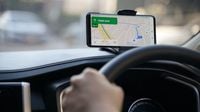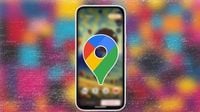In a significant update, Google has released Android Auto 13.6, which introduces notable changes to the Google Maps interface, stirring mixed reactions among users. This new version, made available unexpectedly without beta testing, has altered how maps are displayed in vehicles, with the primary change being the automatic centering of maps on the screen.
The automatic centering aims to optimize screen space, making the vehicle's current location more visible. However, this change has raised concerns among some users, as it can obscure important route information. For instance, when accessing the directions menu, the central positioning of the tracking arrow can detract from the overall visibility of the planned route, potentially distracting drivers.
To install Android Auto 13.6, users can follow a simple process: they need to visit the APK Mirror site on their mobile devices, download the version compatible with Android 8 or higher, and accept the update. The APK is verified by Google, ensuring a secure installation. Alongside the visual changes, this update also enhances stability and compatibility across a broader range of vehicles.
Looking ahead, Google is anticipated to further integrate the Gemini project into Android Auto, which may eventually replace Google Assistant. Users are encouraged to update both Android Auto and Google Maps via the Google Play Store to take advantage of the latest features.
In parallel, Apple has made strides in opening its iOS ecosystem to third-party applications, particularly with the latest update allowing Google Maps to be set as the default navigation app on iPhones. This change, driven by pressure from the European Union, marks a significant shift in how users can interact with navigation options on their devices.
With the release of iOS 18.4, users can now select Google Maps as their default navigation application. To do this, they must install the updated Google Maps from the App Store and navigate to Settings > Applications > Default Applications, where they can replace Apple Maps with Google Maps. It's important to note that this feature is currently limited to users in Europe, as part of Apple's compliance with EU regulations.
As iOS 18.4 is set to officially launch in early April 2025, users are eager to explore this new functionality. While Apple Maps has seen some improvements over the years, many users still favor Google Maps for its comprehensive features and regular updates. This move could potentially lead to a significant shift in user preferences, as more people opt for Google Maps over Apple’s native application.
Google Maps is also enhancing its utility during emergencies, particularly for those living along the Gulf Coast and southeastern Atlantic Coast, where hurricane season poses considerable challenges. The app now assists users in locating emergency shelters and checking the availability of essential supplies, such as ice, directly from the app.
The "Products Nearby" feature in Google Maps allows users to search for specific items and see which local stores have them in stock. For example, during hurricane season, users can type "buy ice near me" to find nearby suppliers. The app will display stores labeled as "Ice supplier," providing a convenient way to prepare for emergencies.
Users can access this feature through both the Google Maps app and the web version. Additionally, Google Maps includes alerts for various emergencies, including earthquakes, floods, hurricanes, tropical storms, and wildfires, ensuring users stay informed about potential threats in their area.
Moreover, Google Maps has introduced support for Bluetooth positioning beacons in tunnels, enhancing navigation reliability in areas where GPS signals are weak or unavailable. Although this feature is not activated by default, users can enable it through the Navigation Settings in the app. By connecting to these beacons, Google Maps can accurately determine a user's location even within tunnels.
As the tech landscape continues to evolve, both Google and Apple are making significant strides in enhancing user experience and safety. With the updates to Android Auto and the increasing integration of Google Maps into iOS, users now have more options than ever for navigation and emergency preparedness. As these technologies develop, it will be interesting to see how they adapt to meet user needs and respond to regulatory pressures.
In conclusion, the recent updates from Google and Apple illustrate a broader trend towards greater flexibility and user choice in navigation applications. As consumers increasingly demand more from their devices, tech companies are responding by expanding capabilities and improving functionality, ultimately benefiting users in their daily lives and during emergencies.







